Britain’s top military officer has told MPs that the UK is “ready to fight” and capable of “facing down the threats of Russia”, even as he acknowledged the need for greater investment in the Army and support services.
Admiral Sir Tony Radakin, Chief of the Defence Staff, made the remarks during an appearance before the Defence Committee. With his tenure approaching its end, Labour MP Derek Twigg asked him for a frank assessment of the current readiness of Britain’s armed forces.
“CDS, can I ask you? And it’s particularly opportune given you know you’re coming towards the end of your tenure now… I just wonder what your view is about the actual readiness of each of our armed forces in terms of the Army, Navy and the Air Force—what’s your assessment currently, of the war readiness?”
Admiral Radakin replied with a direct and confident statement:
“So the war readiness—we are ready to fight. We’re always ready to fight. We recognise, though, that we need to be even stronger in the future.”
He went on to offer a service-by-service breakdown of where each of the military branches stands in terms of recapitalisation and readiness.
“The way that I look at it: the Air Force has gone through the strongest recapitalisation programme, and you’re seeing that. So whether it’s the shift from fourth generation to fifth generation, the A400M, the arrival of Protector, and some of the investment in the Air Force’s bases—that feels the strongest.”
“The Navy is halfway through its recapitalisation programme, and that feels quite tough. It’s tough in the sense of—you’ve got some frigates that are really old and coming to the end of their life, they’re due to be replaced. The replacements aren’t quite ready, and so you’re in a difficult transition. The good news is that there are—is it 21 or 22 ships and submarines—either in build or on order. So that is going in the right direction.”
“And then the Army is at the very inception of a recapitalisation programme. And that’s the one that needs to get going. And it’s on a 10-year journey so that we can meet our NATO responsibilities in the 2030s.”
Beyond the individual services, Radakin stressed the importance of viewing readiness in the wider NATO context.
“I think the correct way to look at that is to put that in the guise of NATO, and what is going on within NATO, and what are the threats that we face? And when I put it into NATO, I see an extraordinarily strong Alliance that is getting even stronger.”
He cited major increases in European defence spending since 2014 as evidence of the Alliance’s growing strength.
“Since 2014, about an extra €600 billion, predominantly from European countries. You now see NATO getting stronger in investment terms by about €70 to €80 billion a year, at least.”
Despite highlighting the threat posed by Russia, Radakin described it as a power currently struggling to match NATO’s capability.
“I see a Russia that is dangerous and malevolent, but I also see a Russia that is weak and is struggling in Ukraine.”
He concluded by underlining that deterrence remains effective and that the UK armed forces are fulfilling their core purpose.
“The crucial thing is: are we deterring Russia, and can we face down the threats of Russia? And the answer is absolutely. And that’s where our armed forces are now.”
In a closing note, Radakin emphasised that support capabilities—such as logistics, medical, communications, and cyber—are also in need of greater investment, on par with the Army’s recapitalisation needs.
“The one that I should mention, which is on a par with the Army in terms of the need for additional investment, are those things that we call the enablers—so logistics, medical, our comms, our cyber. Those need more investment as well.”



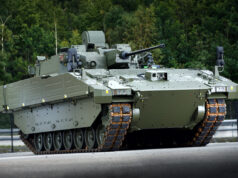

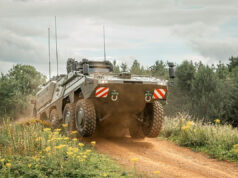
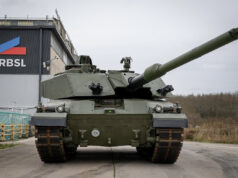

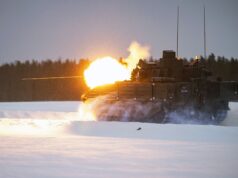



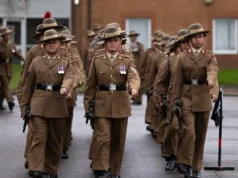

Quote from Ben Wallace today in the Telegraph. “When I tried to increase the number of tanks to be upgraded to Challenger 3s I was told it was impossible because so many of our tanks had already been stripped of parts to keep others running.”
If the Army is serious about a big step up in lethality, a follow-up order of the latest gen Leopard 2s needs to be looked at.
Why is that so difficult? Re-build the spare parts! Use 3D printing if you have too!
Not really worth a manufacturer spending millions for order is a few dozen components.
The Leo hull always was superior, they should have asked to licence build it in the 80s. The Vickers proposals featured that option.
The Leo hull was never superior, engine yes, suspension not even close. An example I can give. The Canadians used Leo’s for convoy force protection and putting doorways in mud brick walls. I was in a convoy, where the lead Leo had a massive IED initiated underneath it (It was a stack of 152mm artillery shells). The tank lept a good foot in the air. Thankfully none of the crew were seriously injured, as the Canadians had fitted additional belly armour. But both tracks were ripped off, one of the forward idler’s had disappeared, along with a number of the road wheels. The first two to three suspension arms from the front were all buckled. The tank was going nowhere. It was recovered to KAF on a low loader and sat in the vehicle park for 5 months. It was eventually air lifted to Germany on an Antanov. It could not be fixed in country. As the tank needed to be disassembled to remove the bent torsion bars.
On a Chally, the hydrogas suspension is external to the hull. Which means if damaged they can be replaced in situ or back in the REME park.
Keeping the numbers of available tanks is crucial. Having a tank that is easy to repair and heft back in the action is more important than looking good.
The tragedy was not retaining a heavy armour plant in the UK. There is good evidence that the CH2 performs well when compared to the M1 in Ukraine, which is largely due to the quality of the product. UK Chieftains were never put in a war situation, so we can’t make a well-informed judgment. However, Ch1 worked very well in the desert and CH2 in the Iraq War, withstanding whatever was thrown at it. The ongoing comparison with Leo’s is interesting and possibly the only option open to the MOD, but CH3 should on paper, build on the excellence of the CH2. Look at the history of the Centurion, another masterclass on how to build a successful MBT.
Means nothing regarding the hull and overall tank.
“Which means if damaged they can be replaced in situ or back in the REME park.” Which also means it is easier to damage.
Maurice, Cheiftain saw combat during the Iran-Iraq war in fairly decent numbers. It struggled with poor reliability and mobility which seems to have been the opinion of the BAOR for a long time too.
David. Why do you say the Leo2 Hull is superior to the CR2 one?
Then where are the spare parts for CH3 coring from?
Is he basically saying that if certain bits break they cannot be replaced at all.
I suspect what it means is that they were beyond economic repair.
But it is interesting that this was the reasoning behind the number – even if it is defective reasoning….handwringing really.
I was under the impression it did really matter what state the tank was in. As it was being stripped back to the bare hull and refurbished. Then new parts were being manufactured. In essence building a completely new tank
So was I.
I thought all the obsolescent parts were being replaced with current ones…..
Are the engines not being replaced? If so could be a driving factor behind the comment. I’m sure the Army wnwt more and Rheinmetall would want to build and sell more if they could.
Correct and Rhienmettal have even said they can manufacture hulls if required!
You can manufacture anything, the question is the cost and time to quantity.
Patrick, BW should have drilled into the detail. We do not know what the Platform Presentation Standard is for donor CR2s, but there is no way that RBSL need every single part to be present. The entire CR3 turret is new including the cannon, therefore arguably a donor CR2 could be presented that completely lacked a turret.
Glad to see at the very end he manages to mention logistics, though you need to have stuff for logistics to supply. At the moment our industrial base cannot supply munitions to replenish stocks used to in a sustained conflict.
It’s not just shells, such as 155mm, there’s a global lack of capacity for TNT for warheads and of propellants too. The situation with missiles is even worse when it comes to ramping up production.
The solution to that was announced previously with dynamic synthesis and full tech being used.
Unfortunately all the explosives factories we used to have under RA have long since shut.
That’s fantastic news and rather timely what with the reduction of UK GDP which equates to a huge saving of £££’s over the next decade.
“The future is bright, the future is Red”, all hail Labour”.
We’ll keep a welcome in the hillsides,
We’ll keep a welcome in the Vales.
This land you knew will still be singing,
When you come home again to Wales 🙂
Clearly and not in touch with the real world. Get him drug tested. What fool can claim the shambbles run down run out of spares and ammo under manned Army can fight any one? We have nothing left in cuboard, the Army is as run down as it gets. Less than 100 working C2’s a few hundred warriors and 14 SPGs will not put Russia off any thing. Deluded fool. What will defend the Army one mid range Air Defence Reg for the entire nation.
Martin, where did you hear that we had less than 100 working CR2s? The last MoD report stated that 159, I think, were readily available for deployment out of 213. That was before the start of the call forward by the RBSL production line team. That wasn’t to say that 54 tanks were so much scrap metal, just that they needed some significant repair work doing.
oh god , you think we can field 159 working tanks, it is MOD speak for we have them, not what state they are in. Spares are short, other tanks are being stripped to fix those still work, Yes we find over one hundred but not over night or in few days if it was an emergency in a month yes not str8 away. And any way i doubt we have much ammo as we keep sending it to Ukraine and stopped making it a few years ago, RBSL call forwards were meant come from retired/stored stock but some where beyond use.
Martin, MoD has more than 159 tanks. It has 213 on the active list. I know all about the cannibalisation, but where did you hear that we had less than 100 working tanks?
And you trust that list? You trust MOD to be up front and honest, from past e3xpreince i do not. We could have 1000 tanks on paper but we stopped making Ammo for them, so whats the point?. Its all smoke and mirrors and bluff. The MOD lies the CDS lies, just because the MOD/CDS says some thing does not mean its factualy true.
I always like to offer some “balance” to the worst of the spin so.
Excellent. So….the Army is ready to fight, with what it has.
The fact that there are hardly any IFV, just 4 Battalions, and that what are left are being replaced with an APC with a MG, is clearly not enough to
hold the Army’s ability to fight Russia in doubt. Pre 2010 there were 9 such Battalions.
Likewise that the RA, 155mm wise, is reduced to a mere 14 SP guns.
Our 4, or is it 3, as they keep changing their minds but never revealing anything officially, Armoured Cavalry Regiments long got shot of their CVRT, and have had to get creative these last few years with their Squadrons, making do with a mix of going on foot and borrowed Warriors, which only yesterday were reported to be ready to be sent on to UKR. Few Ajax are yet in Service, one Squadron I think declared IOC with the HCR.
So no issues there.
Our 3 Regiments of Tanks, or is it 2, as again reports vary and they won’t say, will be putting what CH2 they have left through the factory to bring up to CH3 standard, so not full strength there either.
Of the Brigades we do have, 2 of them have no regular CS CSS whatsoever beyond a Battalion of REME ( with the DRSB ) and a Light Cavalry Regiment of Jackal ( with 4 Infantry Bde ) so I’m again relieved that our few Brigades can still face Russia down without entire sections of the supports that actually make them into deployable, useful, all arms Brigades, and not the paper tigers some are which seem to have been created by Andover to artificially increase the Brigade count!
Phew.
There I was thinking the main fighting part of the Army, its Armoured Infantry, its Artillery, and the RAC which make up the core of 3 UK Division was in a right state to the point that 3 Division is not actually the Division it was after they fiddled with it in 2015, reducing it to just two AI Brigades.
Honestly, these politicians, including the CDS.
I won’t go off on one about the RN and the RAF.
How about telling the truth, that whoever is responsible for the state of the Army, from DS Phillip Hammond, PM David Cameron, and that idiot Osborne onwards and all who came after them, should currently be investigated in public as to why.
The reason why RAF is in the best state was they understood the long term cash curves and didn’t wear their rose tinted glasses and ruthlessly cut platforms to fit the cash. That way the tail was not hollowed out.
Navy clung to too many platforms for too long hoping that common sense would prevail. As well as being victims of Osbourne’s ‘savings’ [delaying the Dreadnought and T26 programs a few years to save pennies] which have meant spending billions LIFEXing T23, T boat(s), V boats and not having Astute 8 or building at a cost optimised speed.
There’s another blindingly obvious piece missing from the CDS’s statement which is persistence. Granted we will always turn up with what we’ve got to hand and give it a go. We may survive round one, but what about rounds two, three, etc?
I think a lot of the statements given are just window dressing. But sadly that the MPs who make up the Committee, not understanding force composition and asking the right questions.
I do know that some of what has be written on this forum and others has appeared during questions as a basic for a question. But I don’t believe the staffers who do the research have the background knowledge to see through the window dressing. Perhaps some of us on here should, volunteer a service. Be good to make them squirm a bit and actually earn their pay!
Bravo! I have lamented that before. These people get away with murder as those questioning are not armed with the knowledge needed to debunk their spin.
One I have mentioned before here was the ludicrous video put out by Carter explaining away Strike. The guy doing the interview was clueless.
Probably by design.
I think that is a great idea, Davey, and I’d volunteer at once on all ORBAT matters.
This is the key point, the question of being able to fight is so general and not good enough, it should have been more focused on specific deliverables or commitments, now asking if the Army could fully meet its NATO obligation as the reserve Corps and supply the expected credible force in the required timeframe, that would be hard to answer truthfully and sound positive in any way, as I’m not sure 14 pieces of artillery is enough for either division and that’s just one problem area.
These committees have little value if they aren’t asking critical questions to gauge the realistic position/state of the Army, this process should have more impact at highlighting the issues and deficiencies that need to be resolved rather than a line of questioning that is so broad it allows a political wash, but atleast now the box can be ticked for the Army being able to fight, job done.
1000 FPV drones would have put this British Army out of any effective offensive capability.
Light Cavalry are a manuever element not CSS.
👍
Radakins deluded. What artillery and GBAD do we possess? Now they’ve binned off Puma2 what’s our tactical manoeuvre in a drone dominated battlefield. What is our offensive strike capability at scale? Yes we have 5th Gen jets (just 2 Squadrons which won’t cover much of a frontline). The navy barely has a surface fleet left and what it has is being fragged and scrapped.
Ready to fight…With?
M270 – has proved very effective
NLAWs – amazingly effective
Typhoon – to take out the S300/400’s that can be located by RIVET
Our co tribulation would be top cover with intel fabric based.
The M270 rockets launchers do you have and recon systems to support them can cover what frontage? 20km?
UK has more M270 than UKR.
NATO has a lot of them.
M270 isn’t used like artillery. You work out your targets you simultaneously open fire from a number of positions on a number of targets and you move out before counter fires can be deployed.
The optimal way is to hit them in a large number of places simultaneously.
Also the UK has if anything a bit of a glut of sensors between DSRB, 11X, ASOB, SF, Rivet Joint, Formation Recce Units, Reaper, Protector…
Wiki lists 44 to be increased to 85, it is more than twice Ukraine but Ukraine have a lot of systems including Himars, their own and a lot of other artillery.
Ready? I’ll have some of what he has been smoking…
We might as always be ready to fight, but with what and for how long? It is always what is unsaid behind the public statement that we need to think about!
“Some of you will die, but that is a price I am willing to pay”
Clear as nutty as Squirrel s**t, deluded fool. What with? we have 14 Wheeled SPG’s likely less than 100 working tanks, One Regt of Air defence, part which is in the Faulklands, and likely part in Cyprus after recent events, . Its idiots like this saying yes we can when really we just can’t and then refusing to accept it.